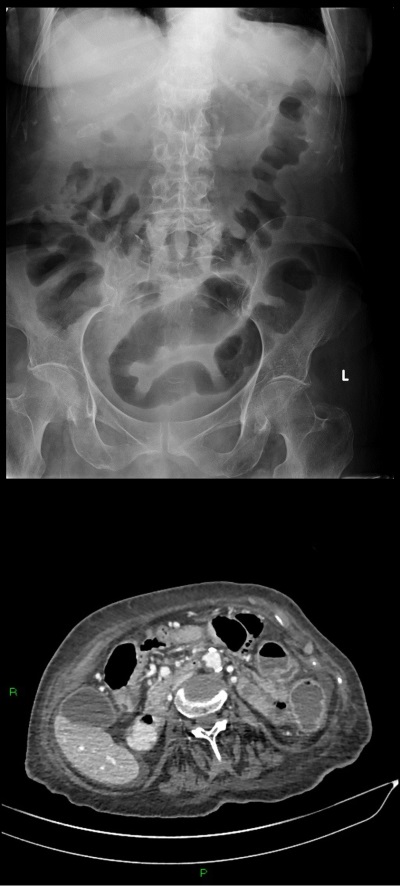A 76-year-old lady is admitted to the elderly care ward with left leg cellulitis. She usually lives on her own and cannot manage at the moment as she is unable to walk very far due to the cellulitis. She is given a course of flucloxacillin 500mg QDS for 7 days. On day 6 her leg appears much improved however she is noted to be markedly short of breath. An X-ray is done and she is diagnosed with a hospital acquired pneumonia for which she is started on tazocin. After 5 days of treatment with tazocin her chest appears much improved however she complains that she is going to the toilet frequently to pass loose, watery stool and also has stomach cramps.
A stool culture is performed which reveals a gram positive micro-organism.
Given the likely diagnosis which one of the following treatments is most appropriate?
Metronidazole
Mebeverine
Senna
Ciprofloxacin
Gentamicin
EXP:
Clostridium difficile
Clostridium difficile is a Gram positive rod often encountered in hospital practice. It produces an exotoxin which causes intestinal damage leading to a syndrome called pseudomembranous colitis. Clostridium difficile develops when the normal gut flora are suppressed by broad-spectrum antibiotics. Clindamycin is historically associated with causing Clostridium difficile but the aetiology has evolved significantly over the past 10 years. Second and third generation cephalosporins are now the leading cause of Clostridium difficile .
Other than antibiotics, risk factors include:
- proton pump inhibitors
Features
- diarrhoea
- abdominal pain
- a raised white blood cell count is characteristic
- if severe toxic megacolon may develop
Diagnosis
- is made by detecting Clostridium difficile toxin (CDT) in the stool
- Clostridium difficile antigen positivity only shows exposure to the bacteria, rather than current infection
Management
- first-line therapy is oral metronidazole for 10-14 days
- if severe or not responding to metronidazole then oral vancomycin may be used
- fidaxomicin may also be used for patients who are not responding , particularly those with multiple co-morbidities
- for life-threatening infections a combination of oral vancomycin and intravenous metronidazole should be used
Other therapies
- bezlotoxumab is a monoclonal antibody which targets Clostridium difficile toxin B - it is not in widespread use

© Image used on license from Radiopaedia ![]()
Elderly lady with infectious colitis secondary to Clostridium difficile . On the abdominal film note the loss of bowel wall architecture and thumb-printing consistent with colitis. The CT from the same patient is enhanced by oral contrast. There is moderate free fluid in pelvis and peritoneum. The colon is oedematous throughout with enhancing walls, but of normal calibre. The sigmoid colon is smooth and featureless. Small bowel, liver, spleen, kidneys, adrenals and pancreas are normal.